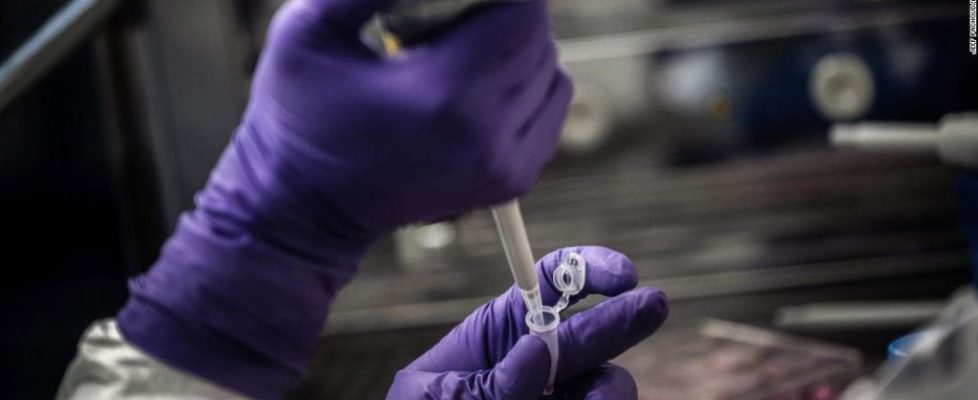Medicare administrator: It’s time to get back to non-Covid health care
Near the outset of the grueling war against Covid-19, President Donald Trump directed my agency, the Centers for Medicare & Medicaid Services (CMS), to recommend the postponement of non-emergency elective surgeries and procedures. The looming threat of a shortage of personal protective equipment and other supplies for health care workers in the face of a surge in cases made this the right call under the circumstances.
Thankfully, providers around the country — willing to make a financial sacrifice for the good of their country — heeded that call. At the same time, it also meant patients might have to forgo necessary care until the situation stabilized.
Fortunately, President Trump’s dramatic expansion of payments for Medicare telehealth has successfully blunted some of the impact. It allowed patients to access their clinicians while staying safe at home. This virtual care has been especially important for beneficiaries most vulnerable to the virus and healthcare workers who were spared unnecessary exposure to it. When it comes to telehealth, it took a crisis to push our country to a new frontier.
That being said, telehealth can never replace what was and remains the gold standard: in-person care. Physicians will always need to listen to their patients’ heart and lungs; children will always need their vaccinations; and adults cannot go too long without cancer screenings.
Indeed, the American Academy of Pediatrics, in a recent call with CMS, painted a haunting picture of refrigerator upon refrigerator of unused children’s vaccines in pediatric offices around the country after a 60-80% drop in childhood vaccinations. If we fail to resume the vaccination of our children, we run the risk of a resurgence — but this time, of long-vanquished conditions such as measles or mumps.Will a Covid-19 vaccine signal an end to the anti-vaccine movement?
While we continue to grapple with the virus, the sacrifices of the American people and heroic health care workers on the frontlines have brought us a long way from where we were two months ago. Telehealth will remain an important tool, but some areas of the country should also begin resuming in-person care for those who need operations, procedures, preventive care, or evaluation for chronic conditions.
The Trump administration has always understood that the public health and Americans’ economic health have a reciprocal relationship to one another. Just as public health is the first prerequisite for economic health, unnecessary economic contraction can inflict a devastating public health toll as people put off important procedures or preventative care — and physician practices fold.
More than half of primary-care practices have sustained a greater than 50% reduction in their patients,according to nonprofit Primary Care Collaborative. The Trump administration worked with Congress to obtain a historically unprecedented $175 billion in relief for hospitals and other providers. Nevertheless, even large health care systems have furloughed tens of thousands of staff.
For the financial survival of a large portion of our nation’s health care system — and the critical medical care they provide — we must gradually reopen. The problem with shutting down outpatient care
CMS has put out detailed recommendations to help states and localities to do exactly that. These recommendations — which last week entered Phase 2 — are a part of the President’s guidelines on reopening, which contain a number of thresholds — regarding case numbers, surge capacity and testing — that should be met before moving on to any of the three phases.
Once they are met, clinicians and healthcare facilities should partner with their local and state health officials to determine a path forward based on CMS’ recommendations.
As part of Phase 2 of the President’s plan, they should begin to resume in-person care as long as it will not jeopardize their surge capacity. Specified non-Covid-19 care sites will be critical so patients know it is safe to get the care they need. Face masks, physical distancing, limitation of visitors and careful screening of all patients and staff members remain essential. Whenever possible, testing should be conducted before a patient comes in for a scheduled procedure.
Americans need their health care. We have seen a dramatic drop in cancer screenings; we know from our internal data that the number of cataract surgeries performed during the pandemic has decreased; and we are concerned about those not seeking care for chest pain, new lumps and myriad other symptoms. Our Phase 2 recommendations include specific information and recommendations for patients seeking to receive treatment safely.
I want to reassure Americans that their doctors, hospitals, and health systems are taking great care to keep them safe when they venture out to get the care they need. All across this nation, we are seeing pharmacies, physician offices and hospitals making use of newly expanded testing capacity to carefully test patients and staff for Covid-19 when clinically necessary, preparing for any outbreaks, and working to secure a reliable means of obtaining the supplies they need.
Parents should feel safe bringing their children to see their pediatricians. Adults should seek evaluation of nagging symptoms that don’t go away.
The American health care system and the general public made heroic sacrifices to meet the generational challenge posed by Covid-19. That challenge continues, but for many areas of the country in a different way. It is time for health care in the US to safely but steadily resume.

